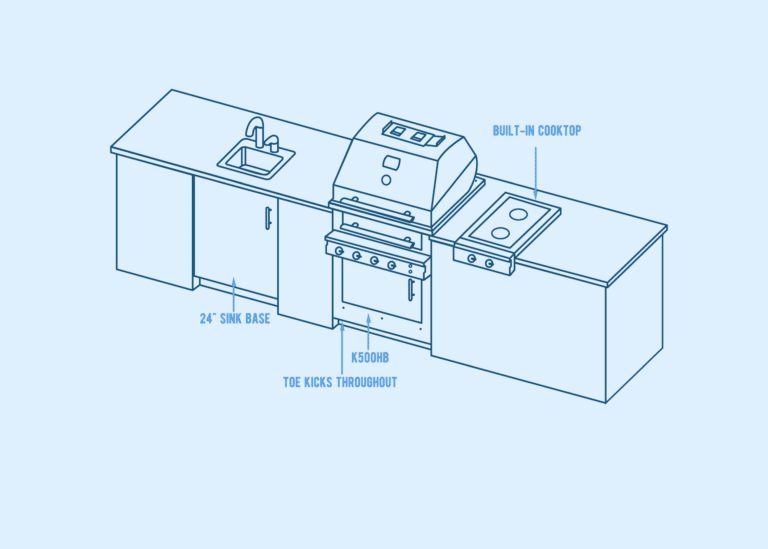$5,000 to $20,000
$20,000 to $40,000
$50,000 to $100,000
These estimates may vary significantly as there are tons of factors that goes into building an outdoor kitchen. Your needs and preferences are some of the said factors.
Nonetheless, we enumerate in this guide your options and its costs so that you can get a good grasp of what to expect with the expenses for your outdoor kitchen according to your plans.
This guide is for homeowners that want to enhance their outdoor living space with an outdoor kitchen and plan to hire a contractor. We'll walk you through the average costs and the details you need to know about so that you are a savvy consumer before requesting estimate.
Average Cost of an Outdoor Kitchen
Outdoor kitchens, are complex projects, and subsequently the scope and price vary radically. Take a look at the chart below to get an idea, and read on to get a better understanding of the costs that would be applicable to your project!

The average spend on an outdoor kitchen ranges from $5,000 – $20,000. On the higher end, it can also cost up to $70,000. To specify, refer to our list to get an idea on average cost which includes labor, framing, plumbing, and flooring.
Factors that Drive the Costs of Outdoor Kitchens
Let's break down the factors that drive the costs so that you can better plan according to your budget.
Size
The size of the kitchen affects the number amount of materials needed, and the labor that will go into it. Average size of outdoor kitchen is around 200–500 square feet. The larger you go the more it will cost, but the more you will get for your money.
The Fixed Cost Trap
The cost of outdoor kitchens decrease relatively as a size goes — in other words if a 12 x 10 is estimated at $10,000 (figurative numbers), a 12 x 20 probably will not cost $20,000. This is because there is a good bit of fixed costs behind the project. Regardless of size, a concrete material provider for the foundation might have a minimum order amount. Regardless of size, you'll also need a refrigerator and a grill.
In our experience, you start to avoid the fixed cost trap at around 300 square feet.
Location
We find that your can typically break outdoor kitchens into 2 categories; perimeter and satellite.
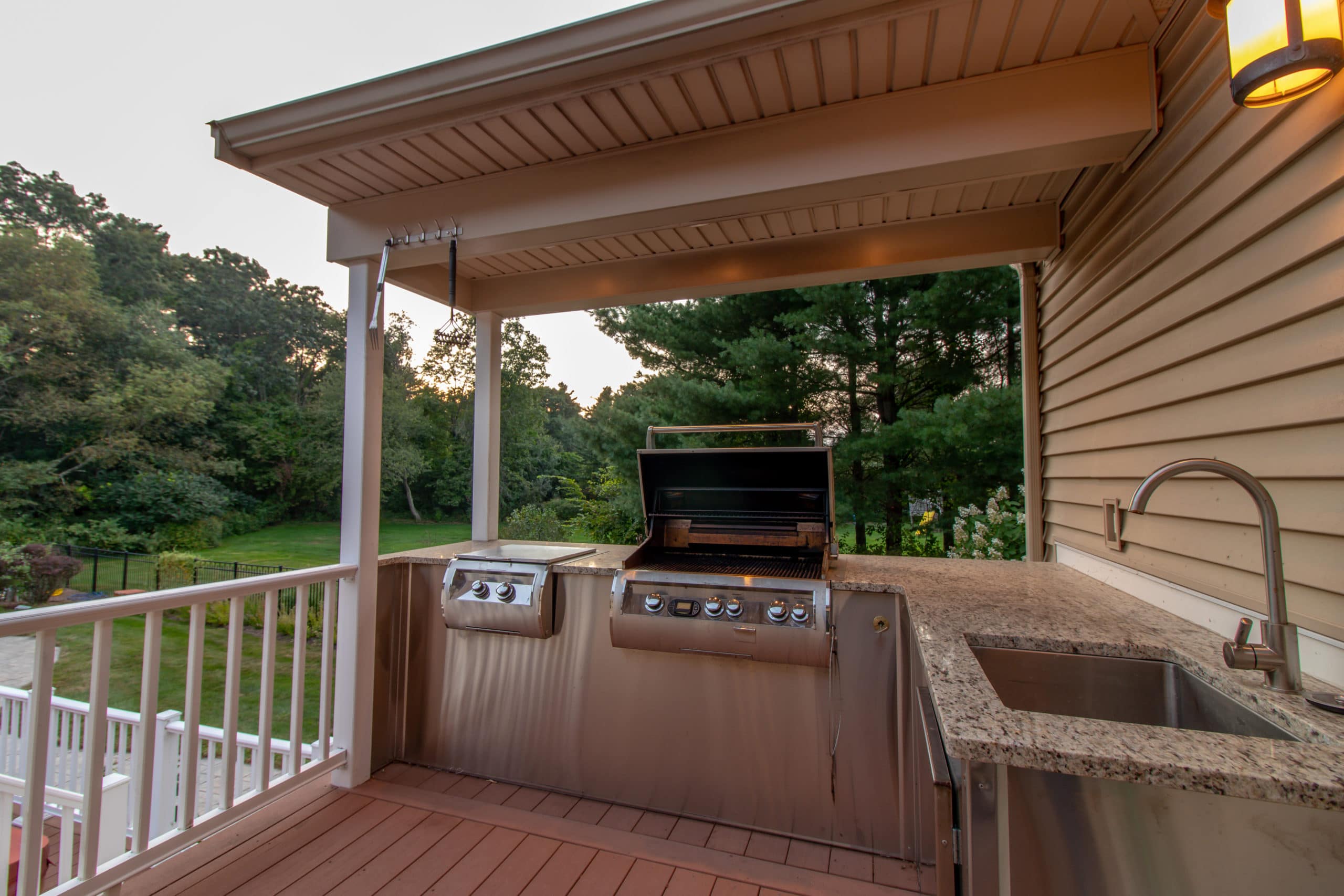
Perimeter
A perimeter kitchen utilizes an existing wall with the host structure (a wall of the house). In doing this, plumbing and electric utilities can be shared, hence saving the cost of running new utilities. Beyond the utilities, if you're going to have a shade structure, they can be hosted off the eave the roof, which may should save on the cost of structural carrier beams and posts.
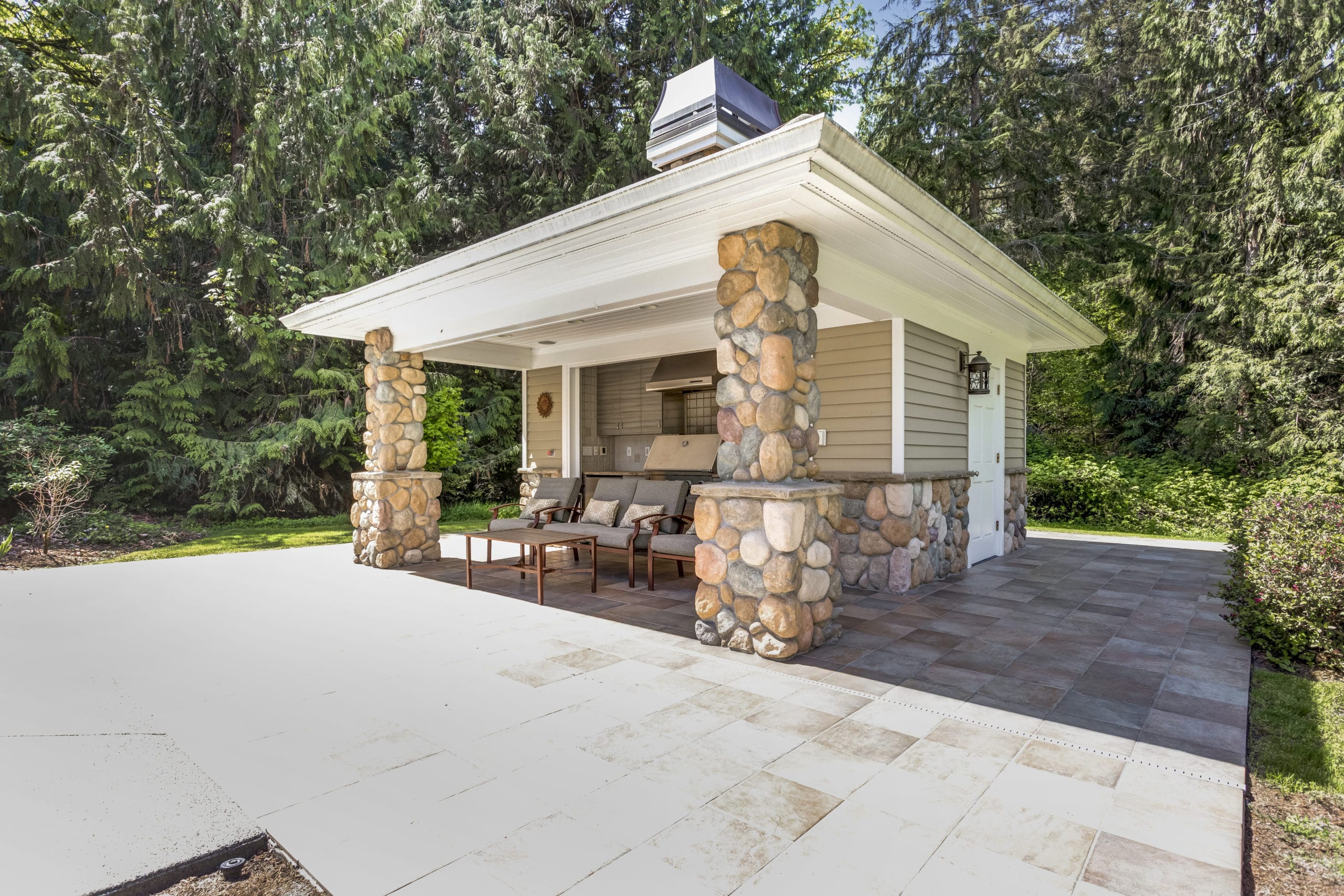
Satellite
A satellite kitchen is situated away from, the house. You get more design flexibility and generally can create a more open space, but costs will need to be hire as plumbing and electric will need to be ran to the kitchen.
Foundation
Site Prep
If not building on an existing foundation, site prep will need to happen. This includes removing any sod or landscaping, digging up an footers, and forming the area where the kitchen will go.
While site prep may seem simple, it is a rather tedious task. It's very physically demanding, and often presents surprises. Fill dirt may need to be added, or some earth removed. Work crews may encounter underground utilities or sprinkler lines that may need to be rerouted. Site prep is typically $1–$3 per square foot, assuming you have level ground, and no major trees that need to be removed.
Concrete Slab and/or Footers
A concrete slab may need to be poured (if not existing). A ❛monolithic slab❜, as they are formally, called is 4″ thick (except in there areas of footer). The foundation may also require footers, if you are going to be hosting a roof.
The alternate would be doing simply a perimeter footing, and then a paver or natural stone throughout the area. The practicality of this option depends on the layout of the outdoor kitchen area. If the main elements of the outdoor kitchen will be on the edge a perimeter footer will be fine, but if you have say an island, that should have concrete to anchor to under any pavers. Plan on $7–12 per square foot in addition to the site prep.
What is a Footer?

A footer a thickened concrete edge intended to provide structural support. Structural walls are typically build on top of a footer. In the case of an outdoor kitchen which may utilize support posts instead of walls, an ❛isolated footer❜ will be used which is simply a big square of concrete.
Surfaces: On Top of the Foundation
Of course gray concrete isn't easy on the eyes, a surface option is typically done with the foundation. And in choosing the surface finish for your outdoor kitchen, the very first thing that you must consider is of course safety. You cannot dismiss that your kitchen can get wet and slippery at times.
So, you have to make sure that the material that you will use for your surface is ideal for an outdoor kitchen. Here are some of the most popular choices for surface finishes.
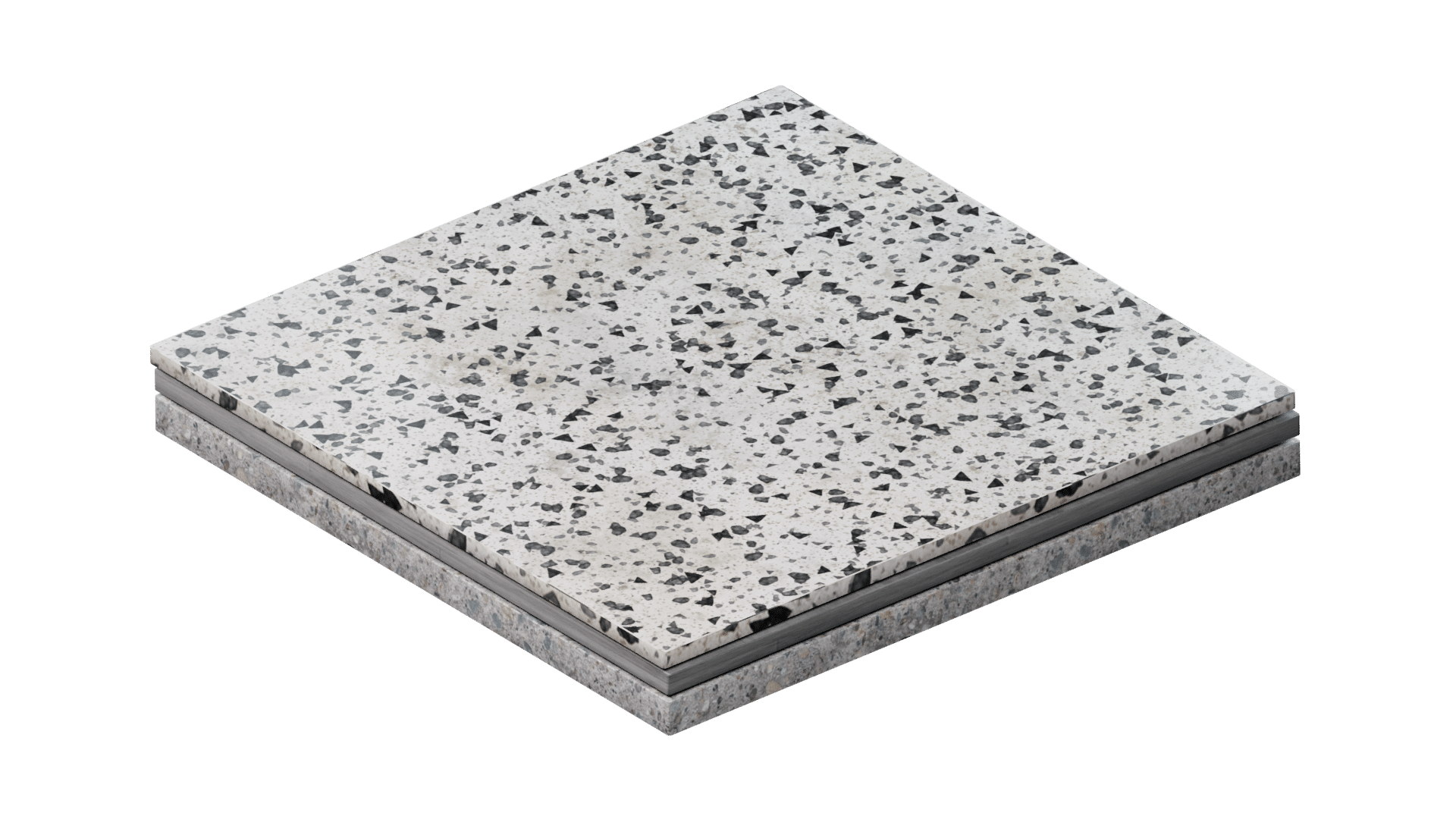
Texture & Paint
Using paint for surface finishes in your kitchen will be a good choice as long as you use the right kind of paint. There are recommended types of paint that will provide excellent protection for your kitchen and make cleaning hassle-free. Using paint as your outdoor kitchen surface can cost you around $382 to $1064.

Tile
Tiles offers a very wide variety of styles. There are different patterns and designs that you can choose from. It also never goes out of style and it is relatively affordable ranging from $10 to $30 per square foot.

Brick Pavers
This is arguably one of the best options for an outdoor kitchen surface. Brick pavers are very durable and very functional. This material can last for a very long period of time and will require very minimal maintenance. And, it is very cheap compared to the other ones at $2.50 to $5 per square foot.

Natural Stone
This may be a good option as long as you choose the kind of stone to use for your outdoor kitchen carefully as some stones may look great at first but they stain easily. Granite will be a good choice because it doesn’t absorb stains and odor as easily compared to other stones. Proper maintenance is the key to keep the quality good for a long period of time.
Travertine is also one of the best natural stone options and it costs around $17 to $30 per square foot.
Utilities
For functionality, utilities will need to be installed by the appropriate tradesmen. When it comes to utilities, there's not many options to factor into costs, rather the costs are driven by quantity (number of outlets and sinks) and distance or pipe and wire ran.
Electrical
Cost will depend on how many outlets you want to install, how many appliances, and how complicated the system will be.
This is one of the time-consuming phases of the project since wiring will happen within the framework. During the wiring installation, there is a mandatory inspection from the city's buildings department to check on your wiring
Plumbing
Most likely, you will add a sink to your kitchen to clean your hands, plates, and utensils after cooking. Plumbing's cost can be affected by length of the pipe run and drainage system will be incorporated.
Kitchen Framework
❛Cabinet elements❜ of the outdoor kitchen are commonly prefabricated out of stainless steel units and concrete composite boards that are anchored into place with tap cons. They are then ❛finished❜ to look amazing. Below we cover the costs costs of each finish.
Material | Price per Sq Ft | Pros | Cons |
|---|---|---|---|
Stucco | $3 – $6 | Durable & fire resistant | Crucial installation process |
Brick Veneer | $20 – $30 | Low maintenance & elegant looking | Retains moisture & mortar can crack |
Standard Brick | $25 – $35 | Eco-friendly and low maintenance | Color limitations, more expensive |
Cabinets
Cabinets and countertops are essential to an outdoor kitchen's functionality. The cost for these depend on how many and how big you will install and what material it will be made of.
The 5 most popular types of cabinet materials (not in exact order) are stainless steel, marine-grade aluminum, masonry, PVC & wood.
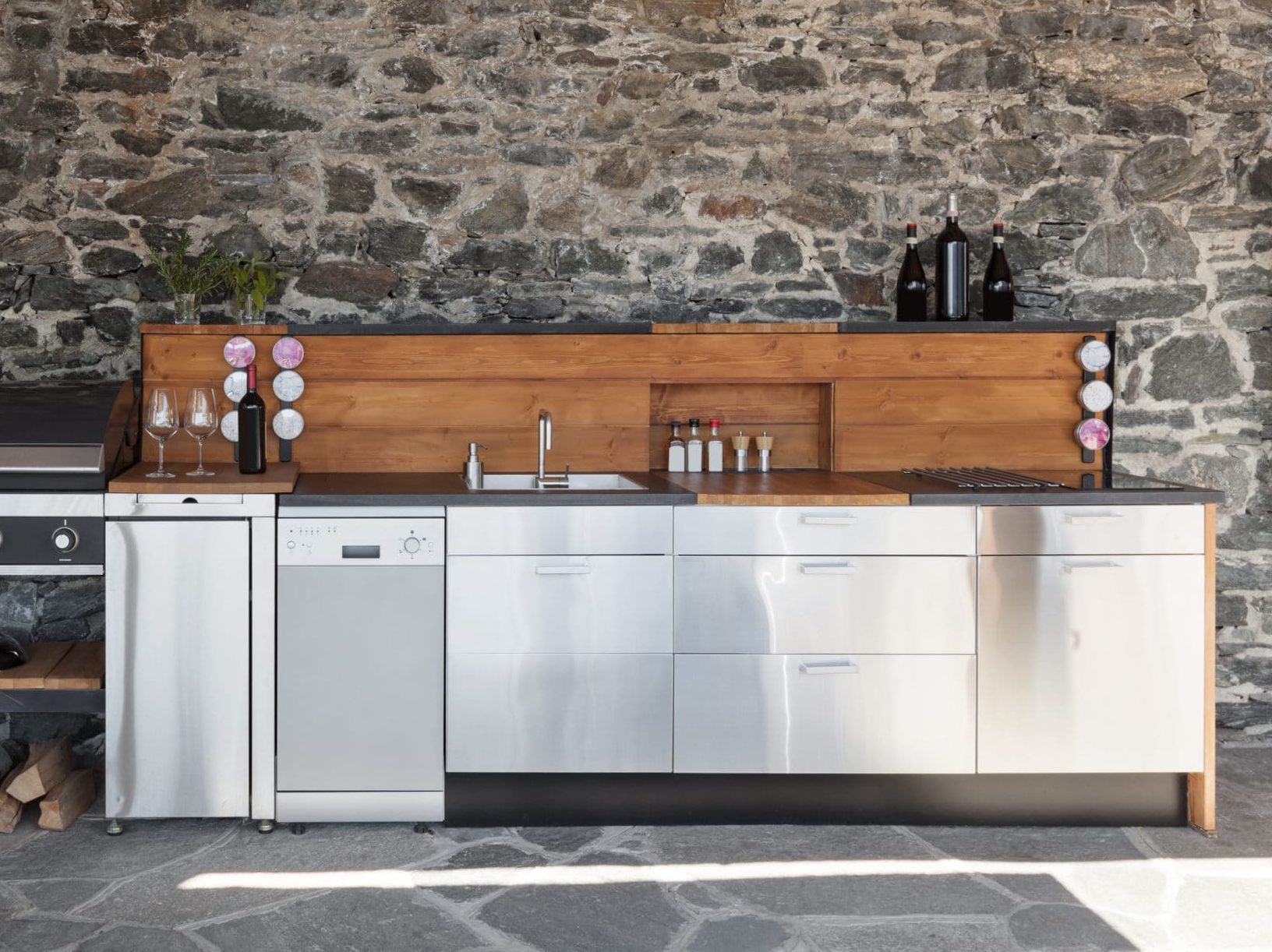
Stainless Steel
Stainless steel has became a common material for outdoor kitchen cabinets in the 5 years with a trend towards contemporary design. The sleek look also bends in well with most newer appliances. When going for stainless steel cabinets, there are two major factors to consider:
1. The type of stainless steel. You should be sure to get a 304 or 316L grade stainless steel. If you live within a few miles of the coast a 316L is recommended.
2. The gauge of steel. We recommend a 16–20 gauge for thickness of the cabinets.
Pro tip: Make sure to confirm that your stainless steel cabinets are indeed true stainless by putting a magnet on the cabinet. A magnet will NOT stick to stainless steel.
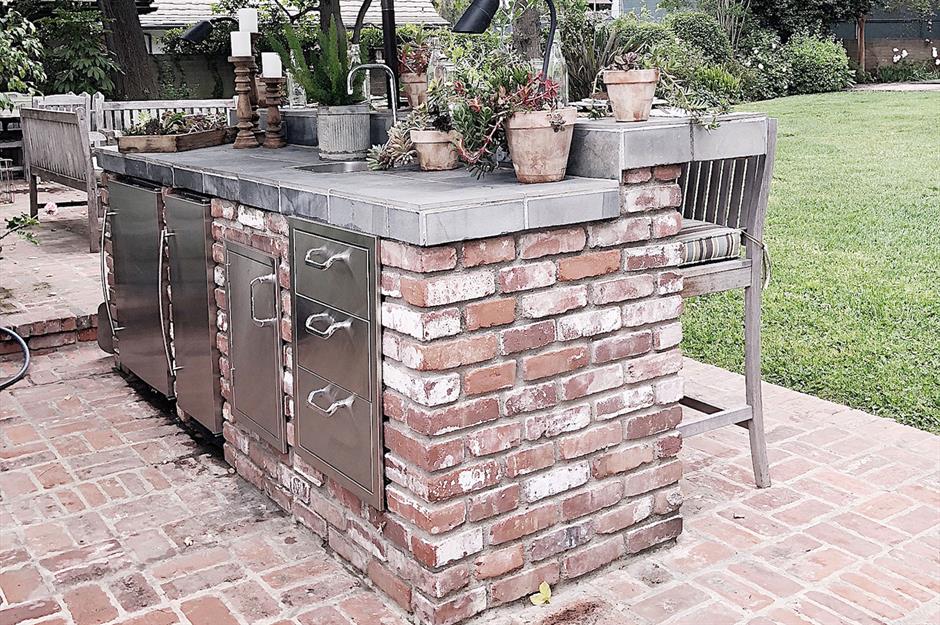
Masonry
This has been the most common outdoor kitchen cabinet option for the last 10 years. For masonry cabinets, the cabinets are actually built with a metal frame or concrete blocks, and then finished with a stucco veneer, decorative stone, or brick. In other words, the part you see, is not actually structural (usually). The exterior finish is then sealed protecting the interior frame from the elements.
As the exterior is just a veneer, there are countless styles and options that can be combined. The materials for these cabinets are also highly commoditized and easy to order. They can often be purchased ❛day-of❜ project and fabricated on site, unlike other options which require ordering from a specific manufacturer, and prolonged delivery times.
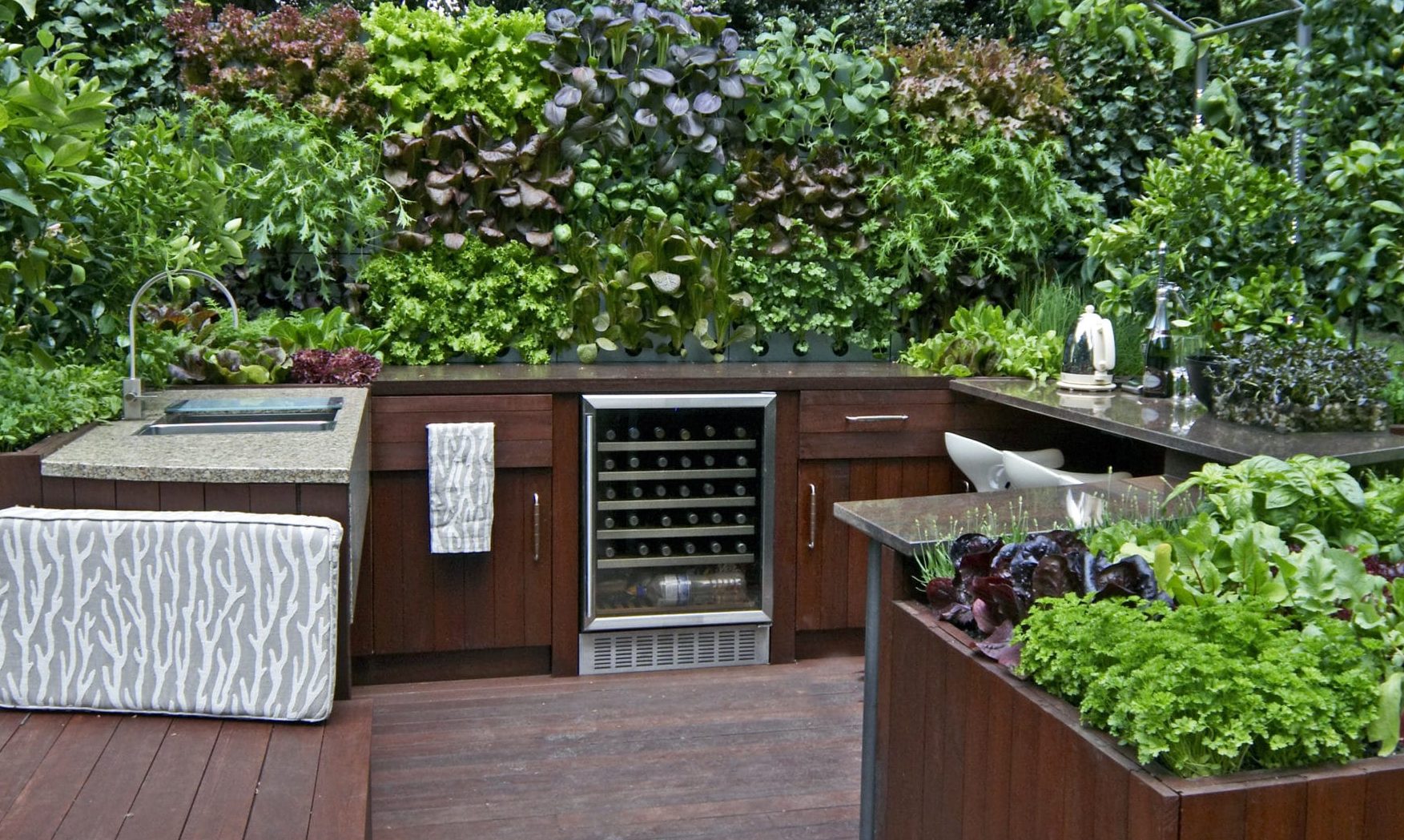
Wood
You can't beat at the authentic, warm look of genuine wood cabinets. While high-quality PVC cabinets give nearly the same aesthetic as wood, many people can't get over the sterile less organic nature of plastic.
Despite that, genuine wood cabinets are the least common type of cabinets used. Why? Their high cost, and maintenance needs.
To begin with you'll want to use teak, mahogany, or white oak. These specialty woods are pricey. On top of that, if you're going with wood, plan on having a roofing option installed. And then you'll need to have regularly applications (estimated every 6 months of water seals, oils or stains, depending on the type of wood you choose).
Marine Grade Aluminum
If it can hold up on boats, it'll be A-ok in your backyard. It is a bit lighter than stainless steel, and is a bit more customizable then stainless steel. This material is commonly used by the manufacturer Urban Bonfire.
PVC and Resin
Although PVC was invented well over 100 years ago, it's just in the past 10 years that it has became used as an outdoor kitchen cabinet materials. It's popularity has been spurred by the fact that it is 100% weatherproof and cannot rust or stain.
Cheaper PVC cabinets may easily fade, so if you go with a PVC option, it is suggest to invest in a solid brand that uses hi-density resin like NatureKast. We have no financial relationship with them, but have found them to magnificently replicate the color and texture of real wood, all without the constant staining and sealing required of wood cabinetry to maintain the appearance.
Countertops
Material | Price per Sq Ft | Pros | Cons |
|---|---|---|---|
Granite | $30 – $60 | Stain, scratch, & heat resistant | Limited supply |
Concrete | $50 – $70 | Durable | Susceptible to stains, cracks, & scratches |
Stainless Steel | $70 – $100 | Elegant looking & larger kitchen | Prone to dents & scratches, noisy |
Granite
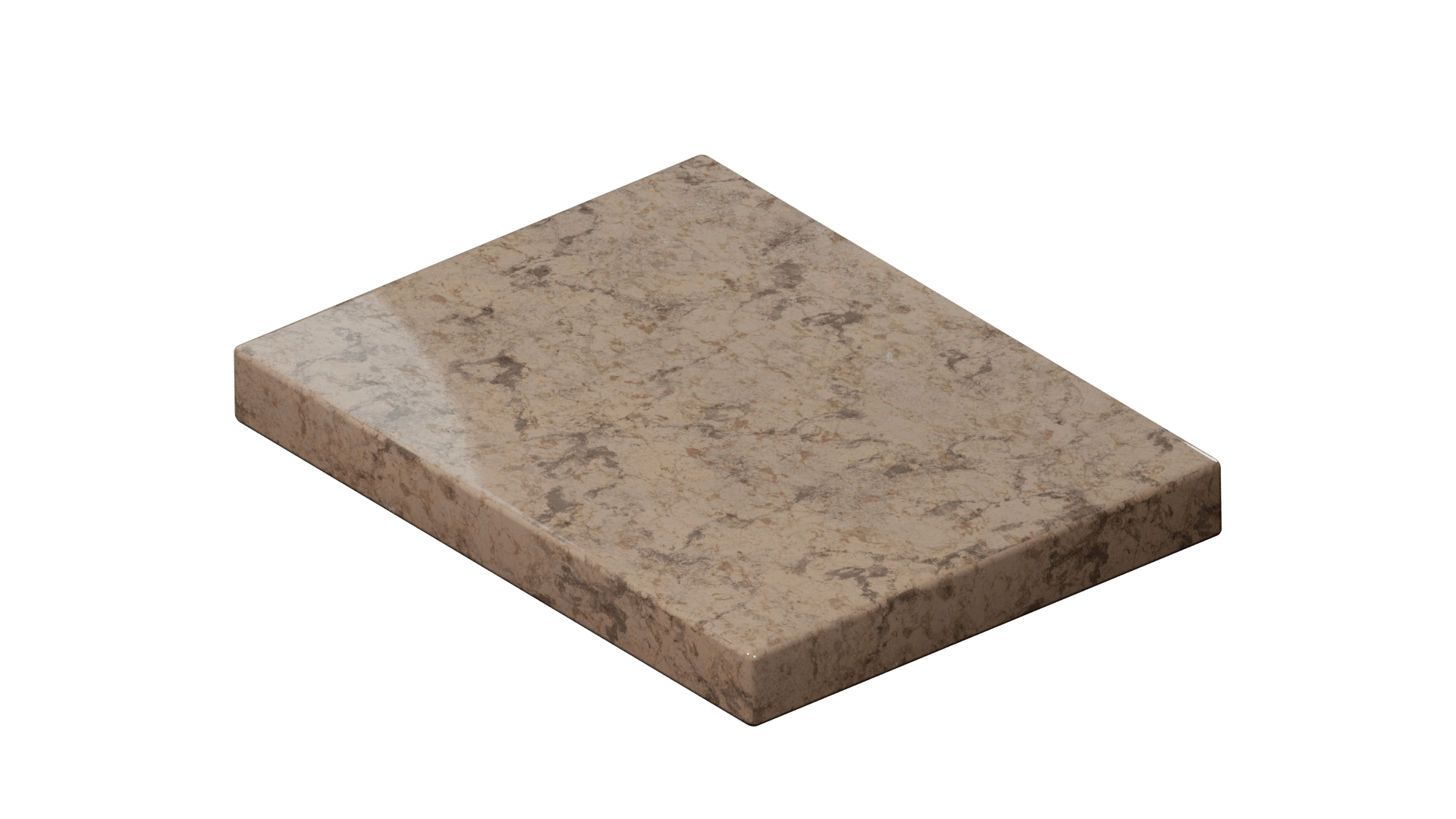
Granite is one of the best materials to use as your outdoor kitchen countertop. They are very strong as long as it is well maintained. They can also endure extreme and varying outdoor temperatures and weather conditions.
Moreover, granites also provide an excellent tolerance for heat which is great for outdoor cooking. One of the few drawbacks is that it requires sealing for at least once a year depending on the sealer used and how much worn out your countertop gets to keep it well maintained.
Concrete
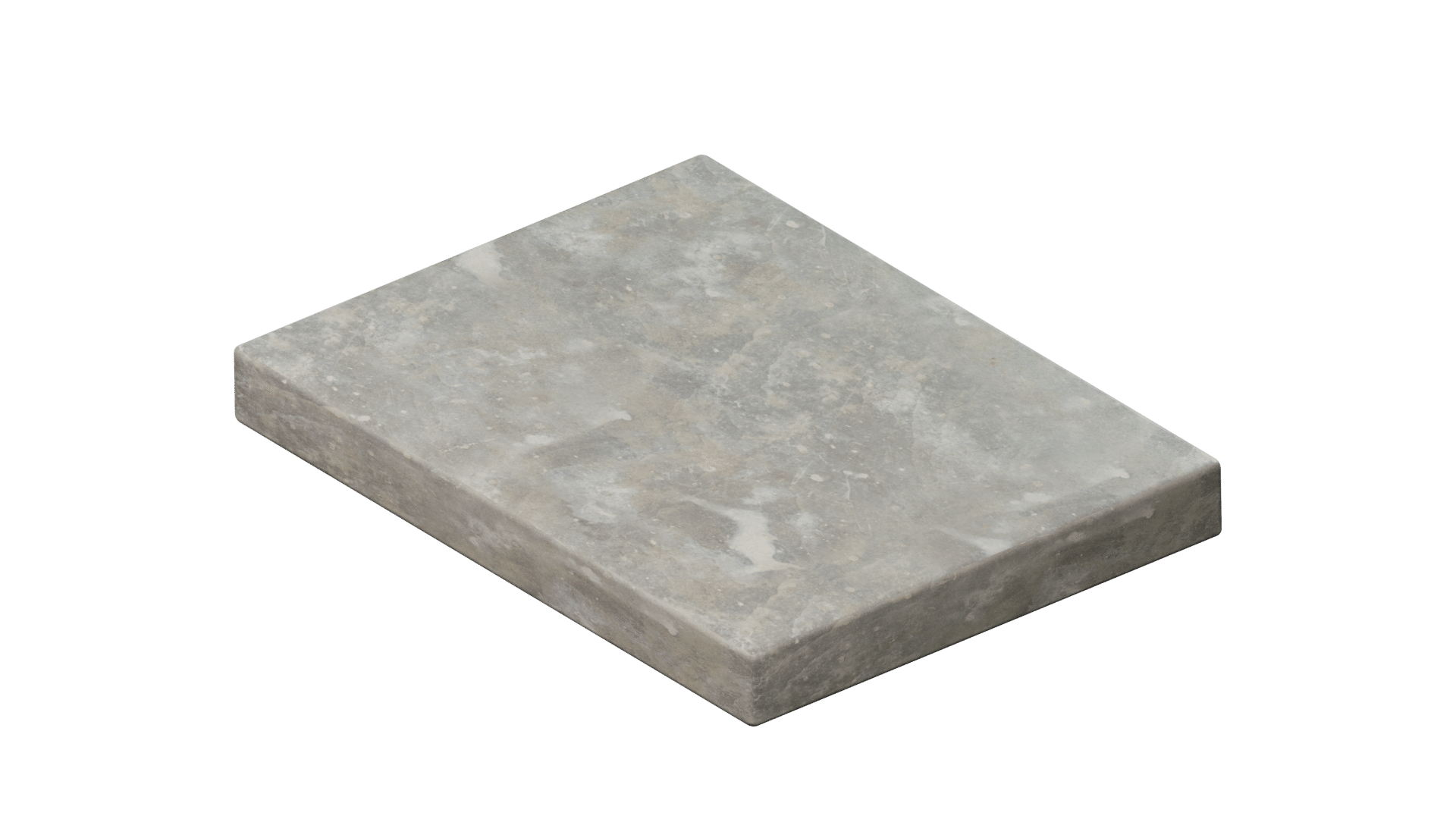
Concrete is being looked at as the number one material for outdoor kitchens because it is highly functional and it also gives a very fancy look. It is very easy to maintain compared to the other materials. However, choosing the right concrete is crucial because not all concrete can be used in outdoor kitchens. If you’re planning to use just regular concrete you may need to add non-crack and non-shrink additives.
Stainless Steel

Stainless steel is also one of the materials that are rising in popularity because it gives off a very stylish look to your kitchen. It is also easy to clean for maintenance and very hygienic making it an ideal material to be used for an outdoor kitchen. But it may not be as durable as the other options.
When you first buy your stainless steel countertop, of course it will be very smooth and shiny, but eventually it'll get some scratches, so you just have to be prepared for it. Stainless steel countertops can also be dented if you’re not careful enough.
Roofing
Roofing costs for an outdoor kitchen depends on the size of the kitchen, how much area of it you want to cover, and the functionality. Here are the common options and the details you need to know about.
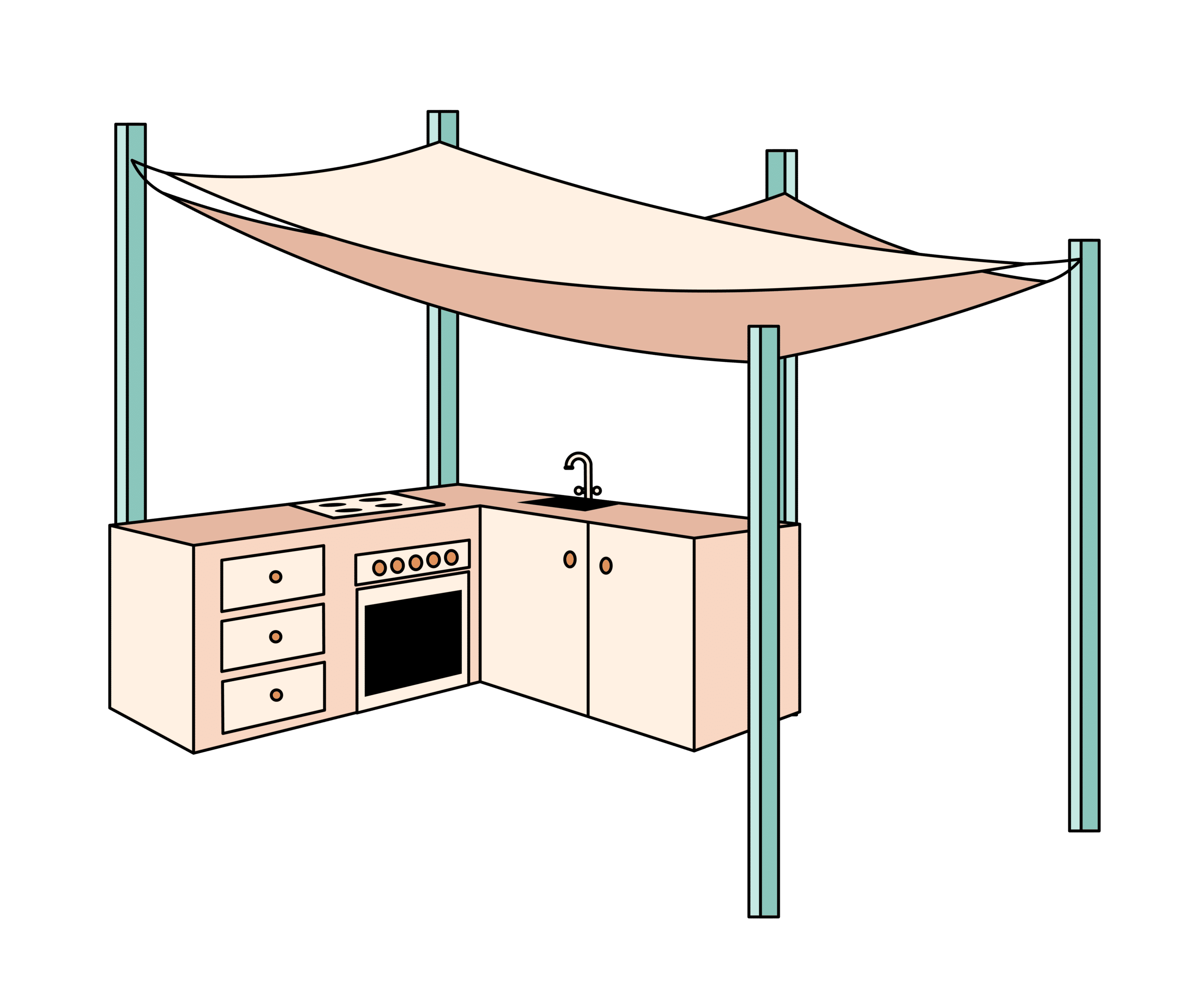
Sail Shade
Sail shades are usually the lowest cost option. They primarily provide shade (as the name implies), but most of them do deflect a substantial amount of water. Although not enough that you would want to utilize the space underneath during a rainstorm, they do help in prolonging the life of anything stored underneath of them.
While shade sails look relatively minimal in nature, in some areas, particularly Florida, they can be required to be permitted due to high wind likelihood and heavy rains, this means a shade sail install that costs $5 per square foot in some places, costs, $10+ in other areas.
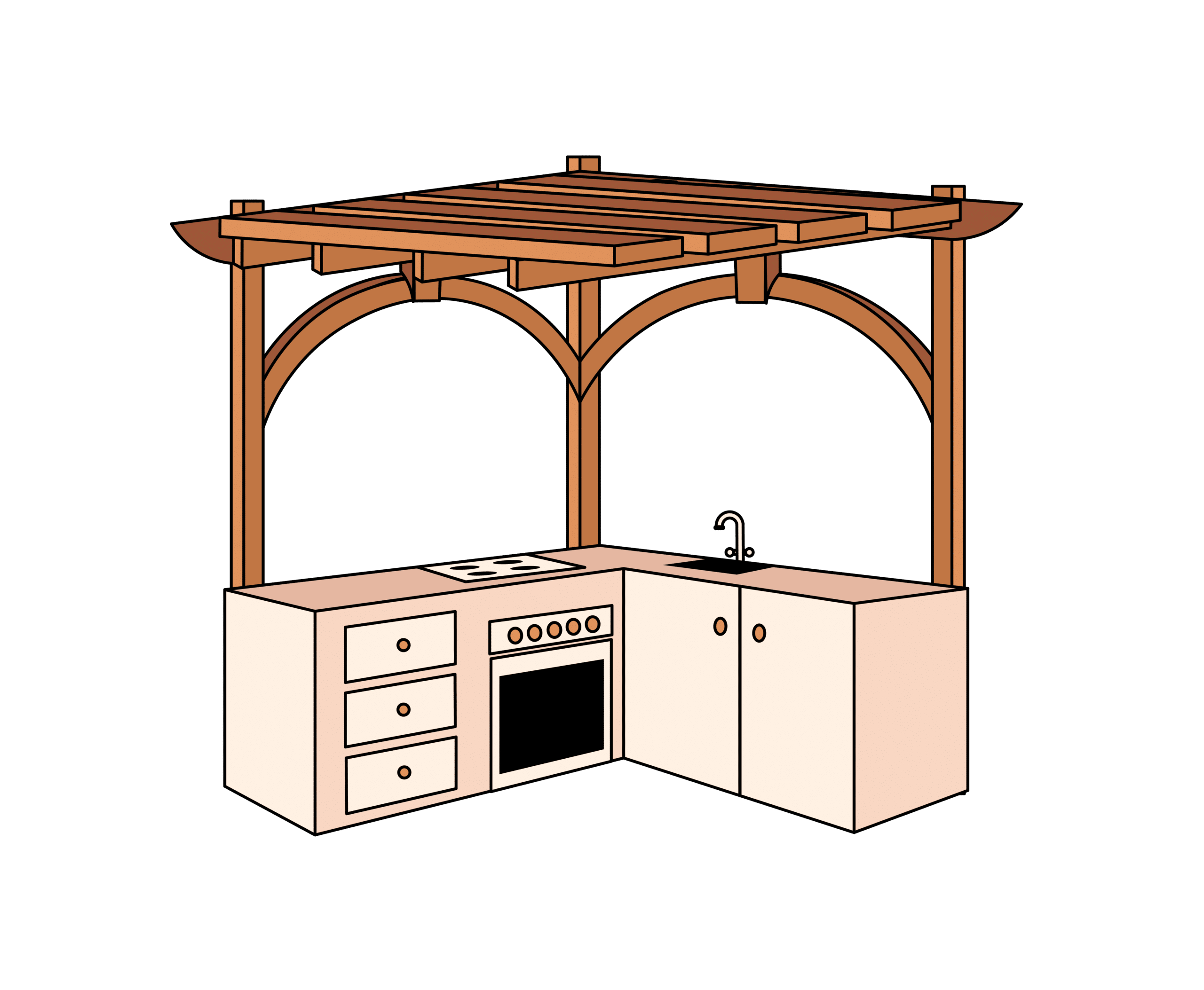
Pergola
A common pergola with perpendicular members costs $8–$12 per square foot when done in conjunction with an outdoor kitchen project. This will provide shade for the area and is best suited for use in dry climates such as southern California, Arizona, Utah where rainfall is rare, but the sun is brutal.
Beyond the common pergola, many options exist, such as louvered roof, and aluminum members with a wood grain finish. We have a comprehensive guide on pergolas here which breaks down the options in more detail which may be used in conjunction with this piece.
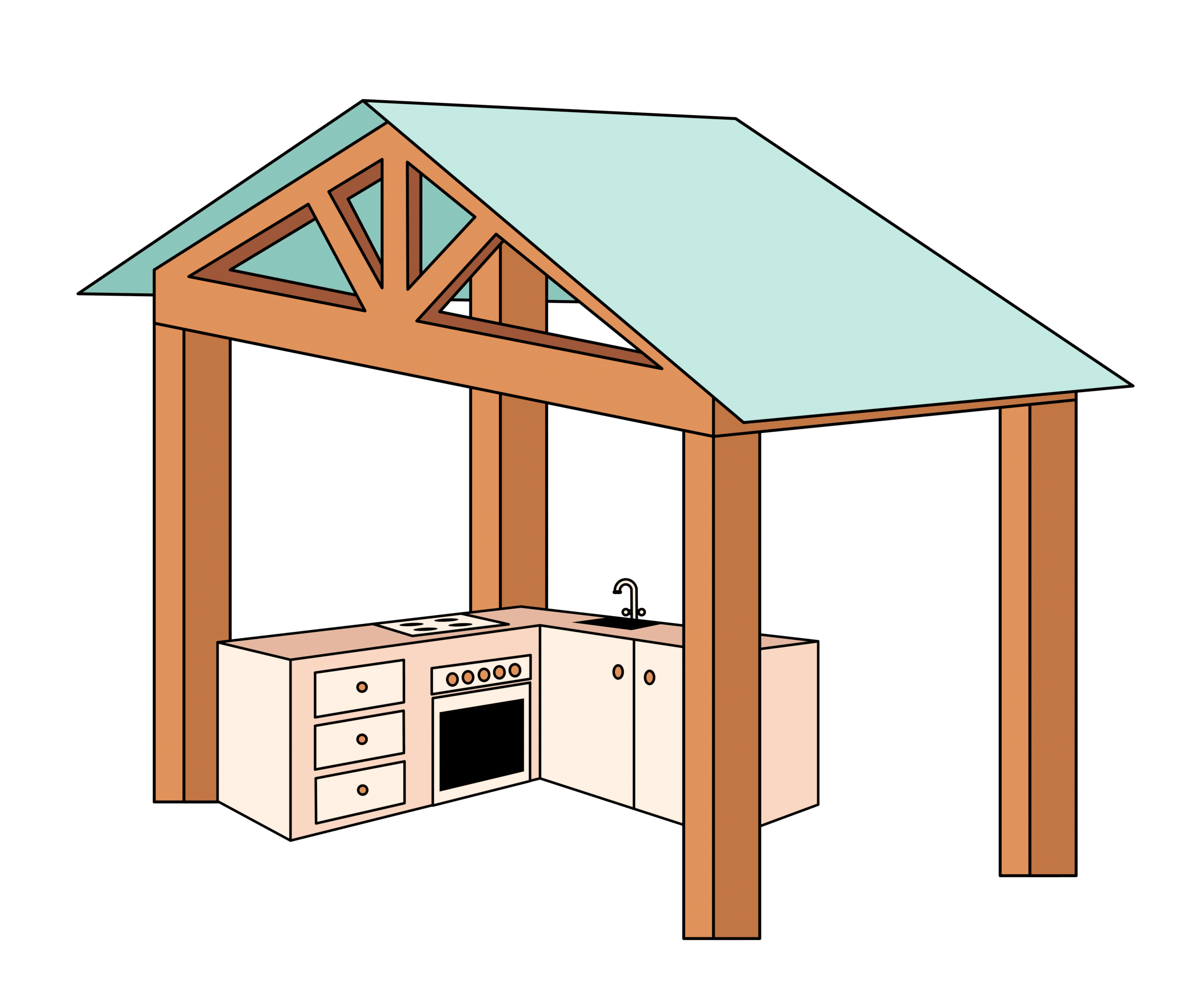
Truss Roofing
This type of roofing will be just like what is on your home; wooden trusses with shingles or tiles on top. If you want the most solid option, or a roof that will match your home (required in some homeowners associations or heavily governed communities), this is the option for you.
Naturally the costs are reflective of the quality here, so it is also most expensive. Expect to pay $40–$90 per square foot for a truss roof on your outdoor kitchen.
The lower range would be for a roof that is hosted off of your existing roof. For a stand alone roof, on a satellite kitchen, anticipate the higher end.

Aluminum Roofing
Aluminum roofing is the lowest cost option that provide full rain protection! There are 2 options for aluminum roofing you should be aware of. The absolute lowest cost option is roll form roofing (also known as ❛pan❜ roofing). This is basically just a thin sheet metal option .024″ thick. It has know insulative property and the area underneath will typically be about the same temperature as the outdoor area.
The higher quality aluminum roof option is ❛composite panel❜. This roof has a high density foam core, that provides insulation and also some impact resistance. The area underneath a composite roof will typically be a few degrees cooler than the outside air.
Expect a cost of $9–$13 per square foot for roll form 'pan' roofing and $12–$16 per square foot for composite roofing.
Sinks & Faucets
Indoor and outdoor faucets and sinks do not differ that much. Most of them are made of stainless steel which is weather-resistant and durable.
Outdoor sinks can be more expensive because of its plumbing system especially if its non-existent in the outdoor kitchen's locations. Nonetheless, here the sink and faucet options that you can choose from:
Kitchen Sink Types

Single Basin Sink
This is a general category of kitchen sinks, which includes farmhouse sinks and in-counter sinks. This style of sink has no division and it is big enough to accommodate big items like casseroles, big pans and it is also very ideal for large capacity houses.
Single basin sinks do not have a drying area so you must be prepared to have this. This is also not very popular because of its size, some find it too small.
Double Basin Sink
This type of sink is one of the more popular designs of sink. This allows you to wash on the other side and rinse or dry on the other side. This is a good choice and you can never go wrong with this style. It is truly a multi-purpose and highly flexible design.
Either side might be too small to accommodate big kitchen tools like big pans, large pots, or casseroles. Contemporary trends are also not in favor with this style, they prefer having a single basin sink.
Low Divider Sink
This type of sink is under the category of double sinks. Instead of the divider going all the way up, it just stops halfway. This is a perfect combination of single and double basin sinks. It is very flexible, it can accommodate different kinds of kitchen tools and you can do many things at a time, for example food preparation.
This type of sink does not really have a downside when it comes to its purpose and design. The only problem with this is a bit pricey compared to other types of sink because not many manufacturers offer this type of sink.
Kitchen Faucet Types
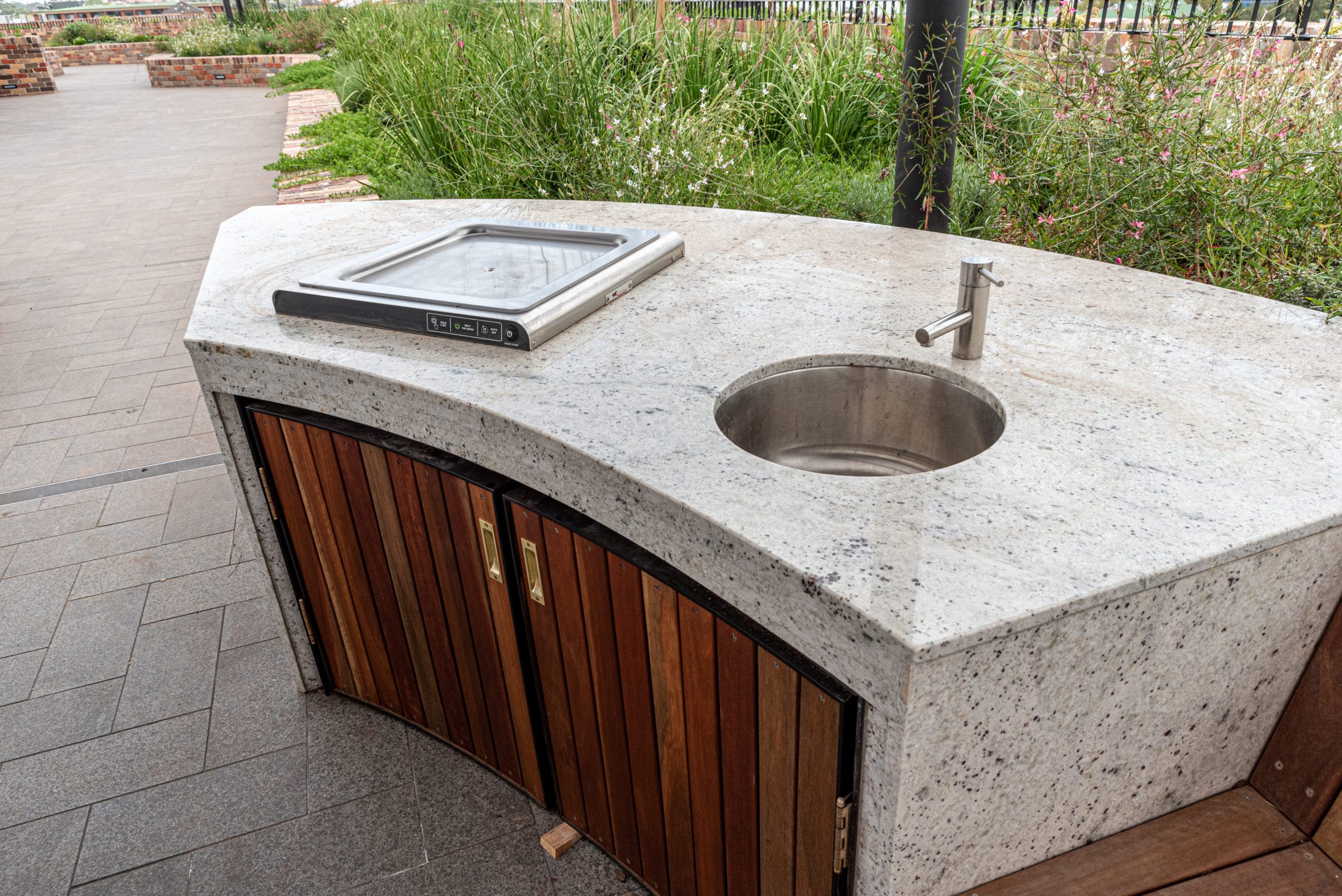
Pull Down Faucet
This type of faucet is one of the more popular faucets that you can buy. This uses a spray wand that pulls down straight to the sink which will be very helpful to also clean your messy sink after food preparation and washing of utensils.
Pull down faucets might break easily if you don’t buy those high quality faucets. Make sure that what you are buying is durable. There may also come a time that water will be dripping from the faucet after you switch it off because of corrosion or mineral deposits.
Separate Spray Faucet
This is a very good choice if you’re looking for a more flexible faucet. The spray has a separate handle but is just connected from the main line the same with the faucet. This comes in handy and easier to use because you have already two choices of faucet depending on what you will be needing.
One disadvantage of this is you will be needing another hole in your sink. There’s also less pressure in the separate spray unlike the built in sprays in other faucets.
Pot Filler Faucet
This type of faucet has a special arm extension that moves outward. It can go over large pots and any large items in your sink. This is more popular to soup makers because they’re using casseroles and they are always boiling water. There are also pot filler faucets that are built into the walls to save more space.
One disadvantage of this type of faucet is it is a bit pricey and also some of the pot filler faucets that are built in don’t have a drain for its main purpose is to fill pots with water. In this case it will be messy in case drippings occur after a while and of course incidents may happen wherein the faucet gets turned on by accident.
Appliances & Fixtures
Choosing kitchen appliance largely depends on what are your planned activities. Most outdoor kitchen have grills, side burners, and mini-refrigerators but you can always a whole lot depending on your size. Fixtures, on the other hand, depend on how you will use the area. You can add ceiling fans during the day and pathway lights for the night. Some of the basic outdoor kitchen appliances are:
Appliances | Cost |
|---|---|
Grill | $500 – $3,500 |
Side Burner | $300 – $1,000 |
Smoker | $200 – $900 |
Refrigerator | $400 – $2,500 |
Grill
This one is a classic outdoor kitchen must have. Having so, there are a lot of grill type options in the market. The main difference among these options is the fuel that it uses.
First, you have the gas grill. This one is a popular option because of its flexibility and ease of use. For a more traditional option, go for the charcoal grill. These one may need some more advanced grilling skills. Among the popular options that you may want to check out are the pellet grill, which uses wood pellets and the electric grill.
There are tons of options out there apart from the mentioned grill types, you just got to choose what's the best option for you.
Side Burners
Side burners are an excellent cooking appliance companion for your grill. For side burners, you’ve got a number of options: single side burners, double side burners, power burners and infrared searing stations.
Single side burners are typically enough to meet your outdoor kitchen cooking needs, but if your activities demand a more advanced cooking equipment (cooking for more people etc.), it may be the best to check out the other side burner options.
Smoker
Another great cooking equipment for outdoor kitchens is a smoker. Similarly to grills, smoker can also be fueled by gas, charcoal, wood or electricity. The difference is that using a smoker gives emphasis on the flavor of the meat. Cooking with a smoker takes longer compared to cooking with a grill because the food is indirectly cooked using smoke.
So, if you are someone that's particular about your flavors, consider getting one.
Outdoor Refrigerator
An outdoor refrigerator will come in handy especially if you’ll be building a satellite outdoor kitchen, as going back and forth to your main kitchen area to get your produce and other cooking ingredients, can get exhausting.
It's also a sure way to keep your beverage cool and ready, when say, you are hosting a barbecue during a hot summer day. Outdoor refrigerators can cost around $400–$2,500.
The Outdoor Kitchen Construction Process
Plan your Design and Layout
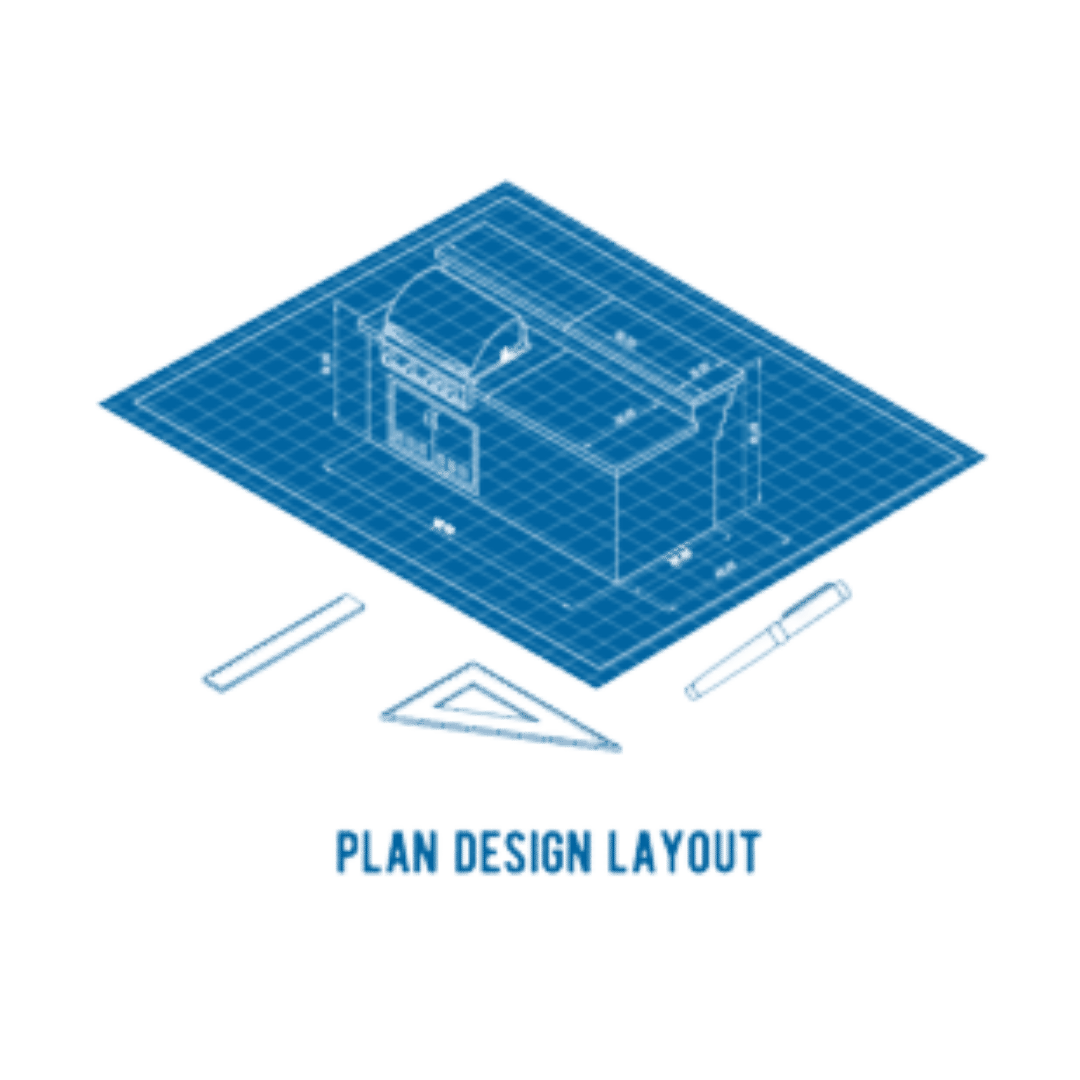
It would be best if you had a clear and thorough plan for your outdoor kitchen's design and layout before anything else. Choose a site or area in your yard that can be fitting for a kitchen setting.
Figure out the best design that would match your home and the ideal layout to cater to the available space and outdoor elements found on your property.
Hire a Contractor

Hiring a contractor is essential since a lot of licensed contractors can offer you liability insurance for protection. Liability insurance is essential, especially when you will encounter physical injuries in the future once the project on your property starts.
Besides, having a professional and experienced contractor can ensure a more effective and systematic way of completing the project. On top of that, they are also more familiar and acquainted with the different kinds of permits or requirements needed for a safe and legal process.
Get the Necessary Permits
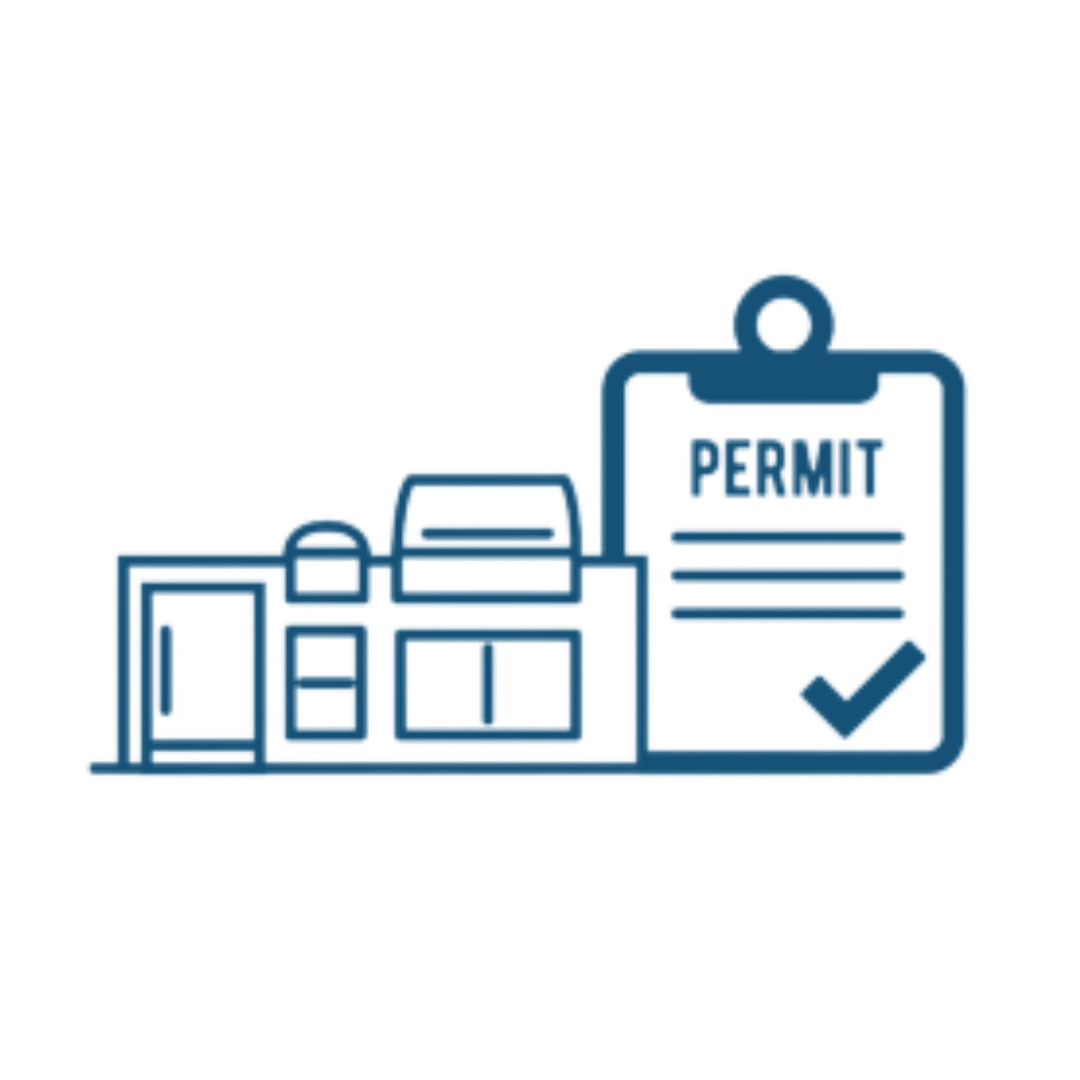
Building an outdoor kitchen in your home will require building, plumbing, and electrical permits. It is also best to double-check your zoning requirements and ask for approval before finalizing the overall design. Closely communicating with your contractor is highly encouraged when it comes to these matters.
Order Materials

Building an outdoor kitchen in your home will require building, plumbing, and electrical permits. It is also best to double-check your zoning requirements and ask for approval before finalizing the overall design. Closely communicating with your contractor is highly encouraged when it comes to these matters.
Run Utility Lines

You will need a utility plan to connect your central supply and waste lines successfully. Having one helps enable complete water, gas, and electric hook-ups so that your outdoor kitchen will be able to function in an outdoor setting.
Install Hardscaping Elements
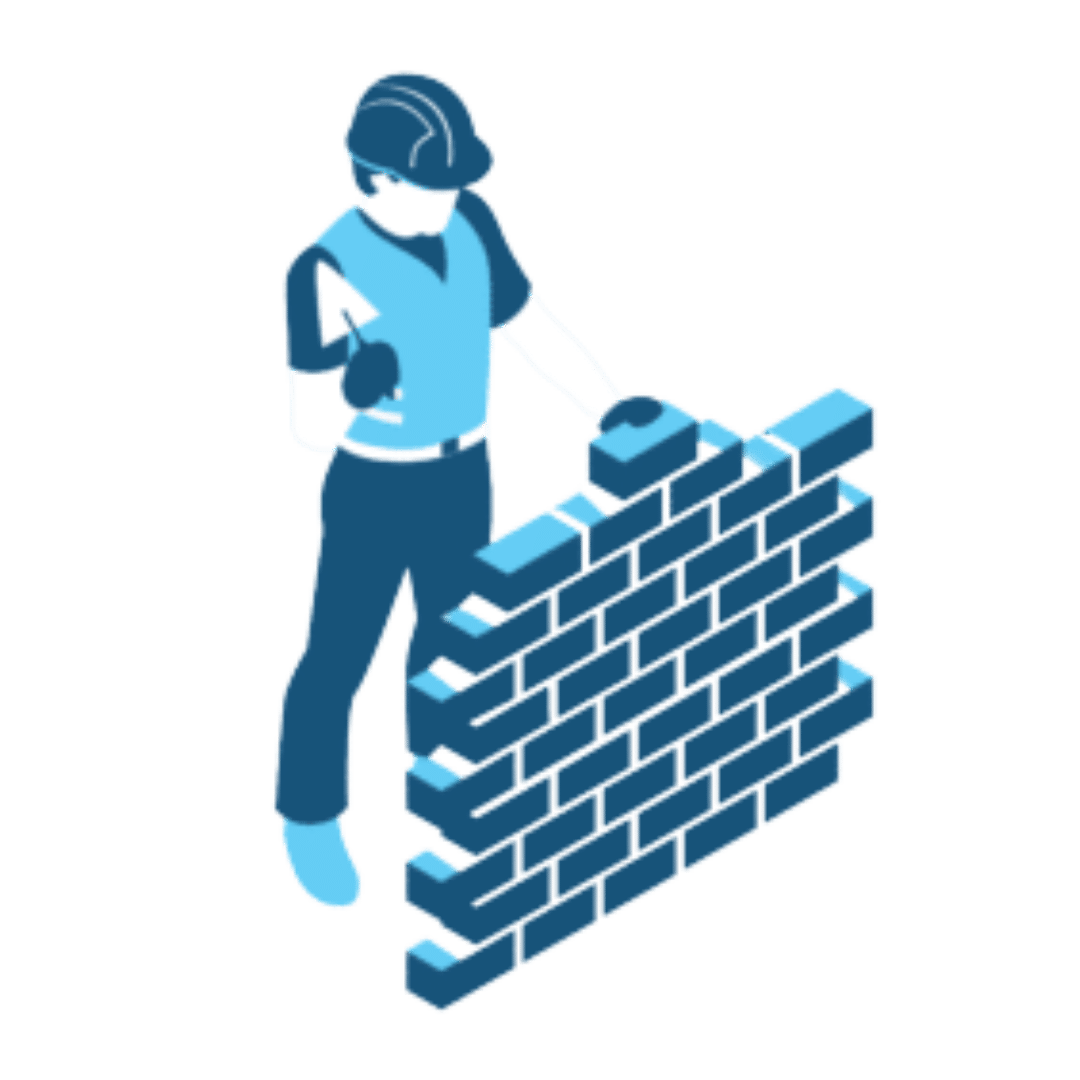
For the next step, start to build the non-living architectural elements in your build. It is best to start with walls, frames, pillars, and stone paths to establish a clear structure or foundation.
Buy Appliances

With the list mentioned above about the necessary appliances that an outdoor kitchen needs to have, it is time to discover the best and most fitting appliances for your new living space. Make sure you choose ones that are meant to be used outdoors and that they can fit snugly into your outdoor kitchen's layout. This way, you can create the most functional and perfect pace for you and your household members.
Build Structural Elements

After most of the structure or foundation of your outdoor kitchen is created, the next step would be building the vital structural elements such as the built-in base, cabinet system, and roofing. You should also carry out lighting plans during this step. And you’re done!
Outdoor Kitchen Examples with Cost Breakdown
1. 15–feet Bbq Island Counter
This simple yet beautiful outdoor kitchen is a project by Luxapatio. Basically, what they did is added an approximately 15–feet standard barbeque island counter to an already existing patio. As seen in the photo, the island is a one-level concept without a
backsplash. It’s a standalone counter with granite finishes and the following basic but essential outdoor kitchen appliances: built-in gas grill, refrigerator, single side burner, triple drawer, standard faucet and sink.
The straight and open design of this outdoor kitchen is a great way to give a modern and minimal look for this outdoor space. The straight layout design is also the way to go if you have a smaller outdoor kitchen space. This layout is also one of the cheapest options.
If you plan on recreating this outdoor kitchen design, prepare to spend around $4,000–$5,500 for the straight kitchen structure and other materials used for building it. Moreover, if you plan on getting the same appliances that are in this project, prepare an additional $2,800–$6,500.
Estimated Project Cost
$7,700 – $12,900
(estimate includes: materials, labor & utilities)
Estimate Breakdown
Island structure: $4,000 – $5,500
Built-in gas grill: $1,200 – $3,000
Green egg smoker: $900
Refrigerator: $1,000 – $2,500
Single side burner: $300 – $700
Standard sink & faucet: $300
2. Simple Perimeter Outdoor Kitchen
For this project from Rivers Outdoor Living, they extended this outdoor living space to create a kitchen. They added a covered patio and added this straight line kitchen layout. For the structure, they extended the patio with a flagstone walkway and they installed a stacked
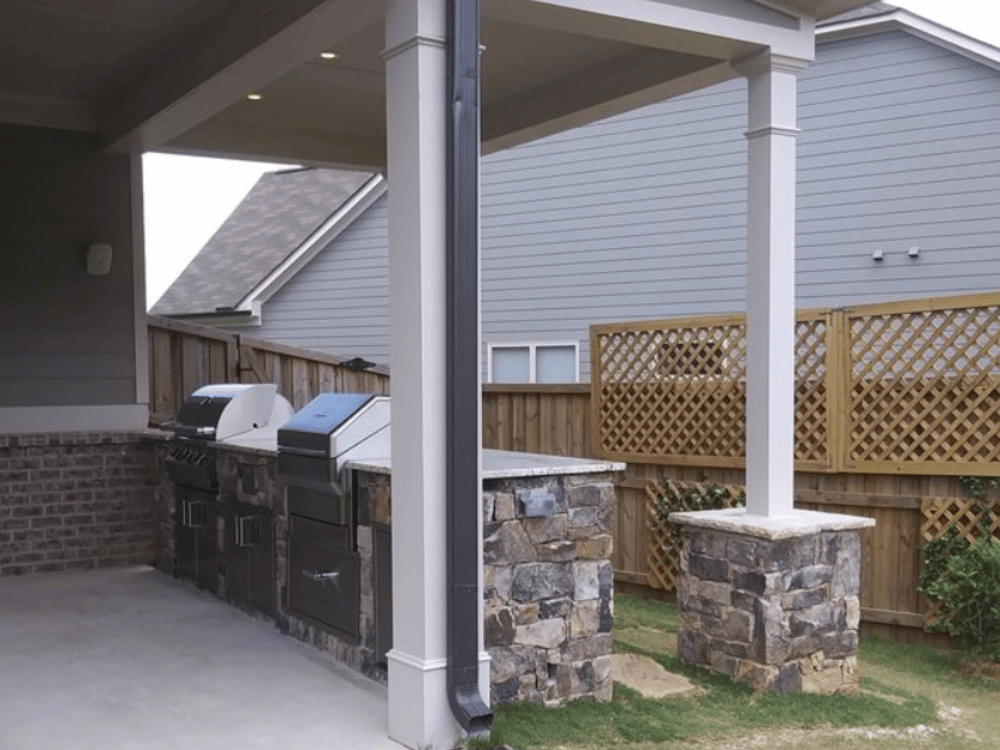
stone cabinet base with a granite countertop. In addition, they instated a number of electrical outlets for the structure.
For the appliances and features, the main ones are the wood pellet grill & smoker and built-in gas grill. They also added custom landscape lighting and recessed low voltage LED lighting in the ceiling. Last but not the least, they finished off the project with stainless steel access doors, soft close drawers and doors with a waste container.
To recreate this project, expect to spend around $8,000 for the patio extension and the kitchen structure. This estimate includes the labor, electrical configurations and other features that come along with the space. To complete the outdoor kitchen, you have to install the appliances. If you plan to get similar appliances installed for this particular project, you’ll spend around $3,300–$7,300 depending on the brand or model that you plan to purchase.
Estimated Project Cost
$10,300 – $16,300
(estimate includes: materials, labor & utilities)
Estimate Breakdown
Extended patio and kitchen structure: $7,000 – $9,000
Built-in gas grill: $1,200 – $3,000
Wood pellet grill & smoker: $1,800 – $4,000
Stainless steel doors and container: $300
3. L–Shaped Entertainment Kitchen
This project from Elite Pavers is a part of their project for the Settlers Rest Community. This outdoor kitchen serves as a kind of entertainment space for the community. This project started with the foundation of this outdoor space, the paver patio. For this one,

they used Old Towne 2PC style Pavers and Santa Fe Color Pavers. After completing the pavers, they built this simple L-shaped outdoor kitchen using Sand Dune Color and Stone gate wall blocks. On top of the wall blocks, they used granite for the very spacious countertop. For the outdoor kitchen equipment, they installed 2 grills.
Elite Pavers did not specify the size of the paver patio but assuming that you want to recreate this kitchen on a 20 x 20 paver patio, expect to spend around $5,200 for the paver and its installation alone. Then, for the L-shaped kitchen structure, you’ll be spending an additional.
Estimated Project Cost
$16,200 – $22,200
(estimate includes: materials, labor & utilities)
Estimate Breakdown
Paver Patio: $5,200
L-shaped kitchen: $8,000 – $11,000
2 built-in gas grill: $3,000 – $6,000
Popular Layouts for Outdoor Kitchens
Straight Line
you will use non-combustible materials if you place your outdoor kitchen against the wall of your house. Using these materials can prevent damaging sidings and reduce unforeseen accidents and risks in the long run.
L–Shape
L–shaped outdoor kitchen layouts are also popular since they can conveniently merge into your outdoor spaces. Plus, this type of layout is flexible when it comes to budget and size. An L–shaped layout can fit perfectly in smaller outdoor areas
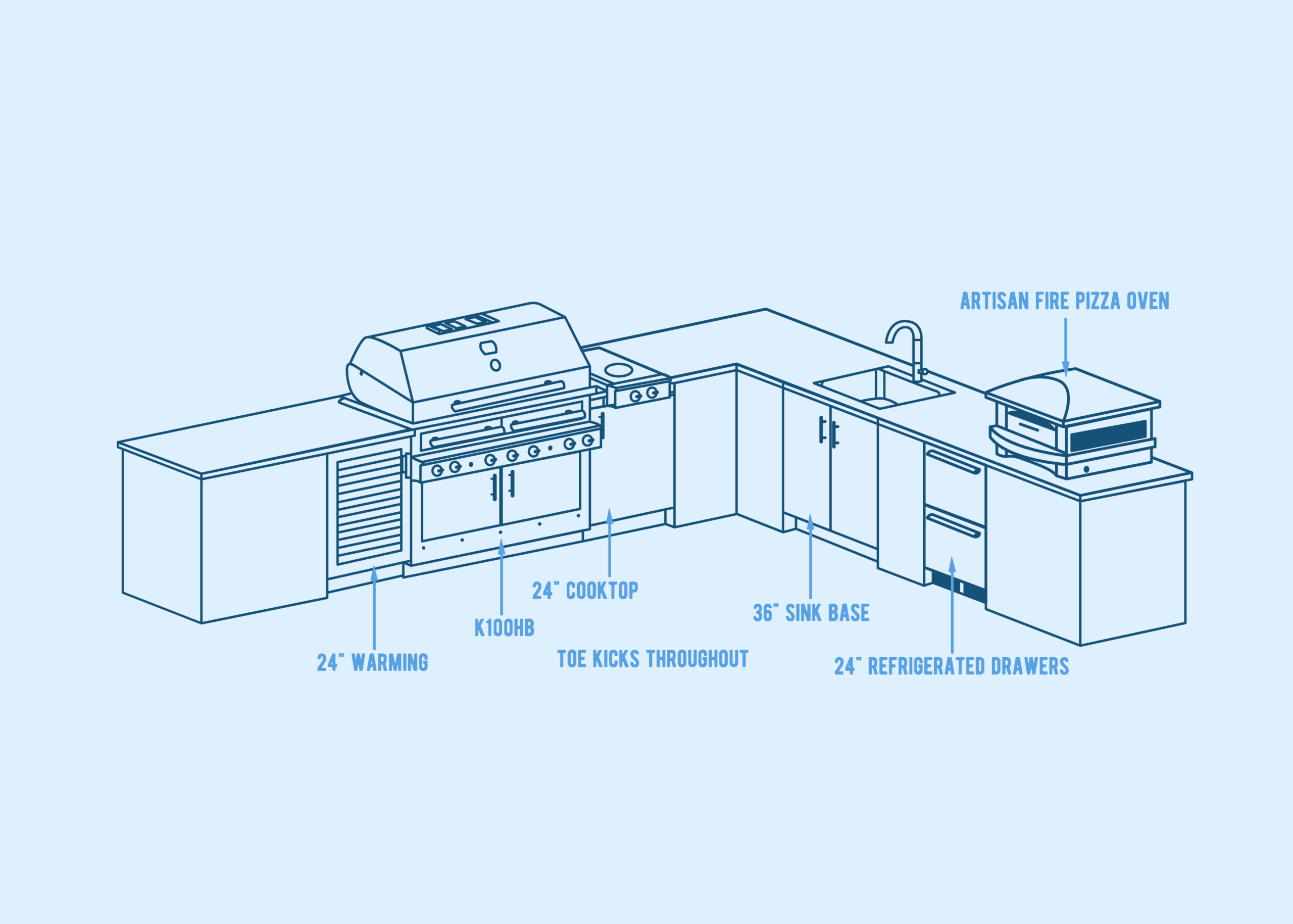
without costing you space for other activities in the open. Moreover, it is perfect for combining areas for cooking and entertaining guests.
U–Shape
If you're looking for outdoor kitchen layouts that can recreate the functionality of an indoor kitchen, then a U-shape layout is perfect for you. U–shape kitchen layouts can cater to a large amount of storage space and appliances. Areas for preparing and

serving food will also be more than enough to allow household members to do their tasks and work efficiently at the same time. It is best for homes with an extensive outdoor space that can accommodate several relatives and guests that might be visiting.
Kitchen island
Kitchen islands that stand alone are considered one of the most uncomplicated outdoor kitchen layouts since all the appliances are installed as one central unit. Islands save more space and can also be cost-effective. Other than islands being free-standing
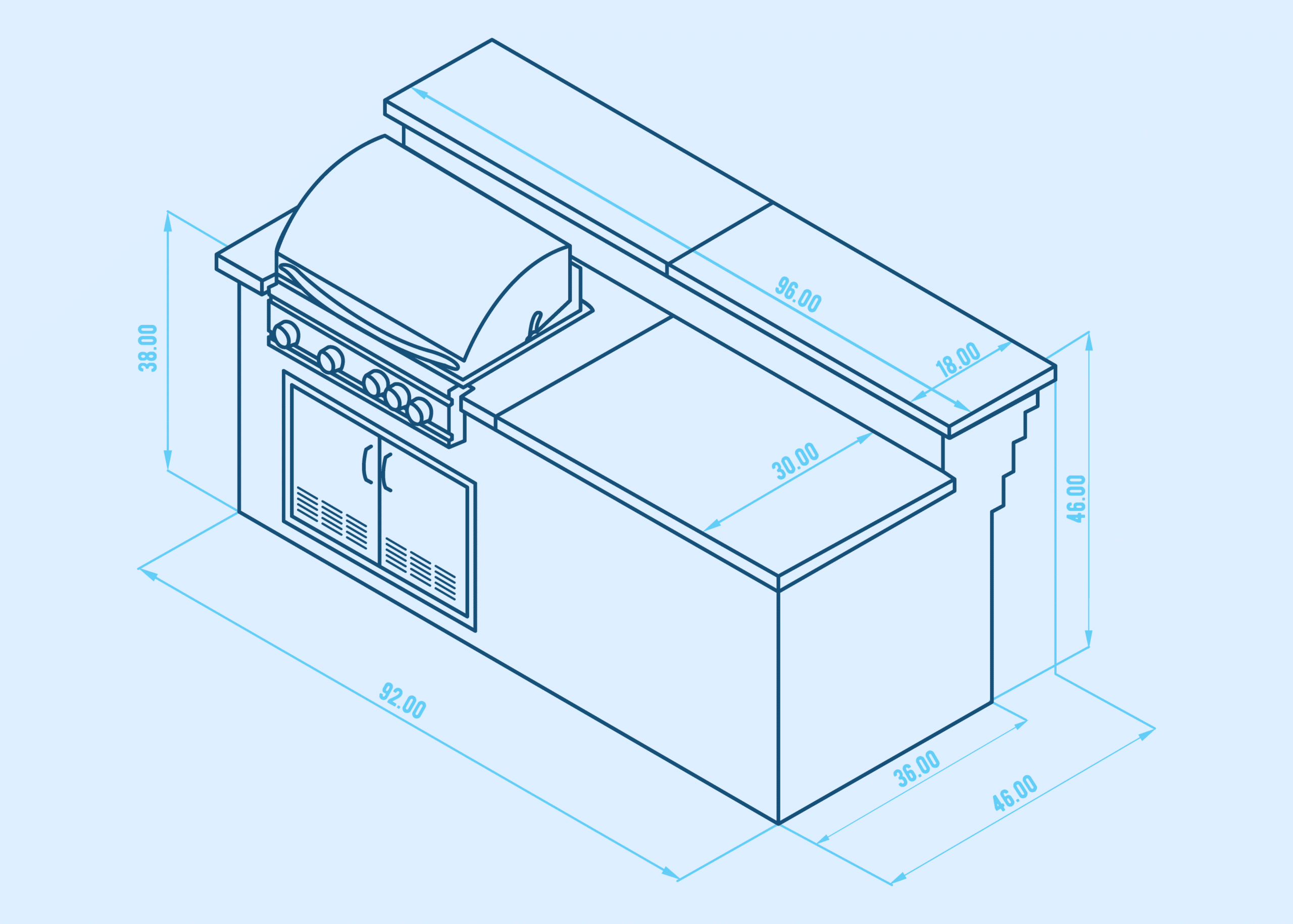
kitchens, they can also be attached and joined to different layouts to have more room for kitchen components and areas for entertaining guests or cooking.
Outdoor Kitchen Project FAQs
There are many different styles of outdoor kitchen and you can choose anything that will match your taste and preferences. One of which is an open-air kitchen, this kitchen style gives a very simple and cozy ambiance. This option is also cost-effective because you won't be needing to spend much on electricity.
Another kitchen style is a stone outdoor kitchen, in this kitchen style it mainly focuses on the stone details of the design such as a stone fireplace and grilling station. But this is just the tip of the iceberg, the outdoor kitchen design options out there is limitless. You can customize your own completely from scratch.
Outdoor kitchens are becoming more and more popular nowadays. Building one can cost you a few thousand bucks but it will definitely add value to your home. Investing in outdoor kitchens will be worth it especially if you’re planning to sell your house for it will have a higher value in the real estate market.
Having an outdoor kitchen exposes your appliances and furniture to elements. It will be a big help in the long run to have your kitchen covered to preserve your appliances and protect it from rain, direct sunlight, and other elements that might destroy your kitchen.
Granite is a very strong and durable material. It is a good choice of material which can last for a very long time as long as it is well maintained.
If you decide to use granite, make sure to always wipe spills like wine or oil because granite sucks up liquid which will stain it. It should also receive proper sealing every year to avoid bacteria from invading the insides of the granite.
Wood is not the best option to use in outdoor kitchens. There are more materials which are more practical and durable which are the ideal materials to use in outdoor kitchens. But if you really want wood cabinets, choose the kind of wood which is best suited for outdoors. Some of the best outdoor woods are cypress, bamboo, and teak.



